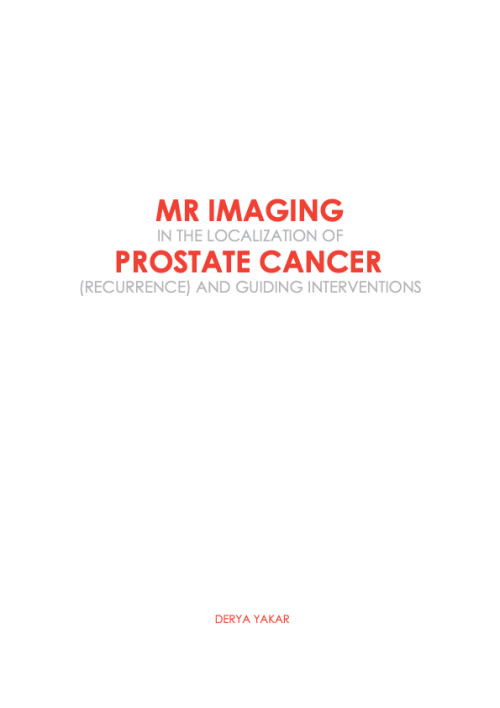
MR Imaging in the localization of prostate cancer - (recurrence) and guiding interventions
Prostate cancer (PCa) is a significant health burden. In developed countries it is the most commonly diagnosed form of male cancer. In terms of estimated cancer deaths it is the third leading cause after lung and colorectal cancer. As in all cancers, when diagnosed in an early stage a successful curative management plan is attainable. In this thesis, the following was concluded: 1. Based on the literature, MP-MR imaging appears to be the best available imaging technique currently in localizing, staging, determining aggressiveness, and volume of PCa (chapter 2). 2. Based on the literature, it is recommended to perform MP-MRI for the localization of PCa consisting of at least T2-w, DCE-MRI, and DWI for the highest diagnostic yield (chapter 2). 3. The use of an ERC in 3D MRSI in localizing PCa at 3T only slightly increases the localization performance compared to not using an ERC (chapter 3). 4. Dynamic contrast-enhanced MR targeted MRGB in patients with a biochemical recurrence after radiotherapy of PCa is a feasible technique (chapter 4). 5. According to the literature, detection rates of MRGB of the prostate in patients with a history of previous negative TRUSGB sessions are higher compared to repeat TRUSGB (chapter 5 and 6). 6. It is feasible to perform transrectal prostate biopsy with real-time 3T MR imaging guidance using a remote controlled, pneumatically actuated, MR-compatible, robotic device as an aid (chapter 7). 7. Transperineal MR-guided focal cryo-ablation of recurrent PCa after radiotherapy is feasible and safe (chapter 8).
